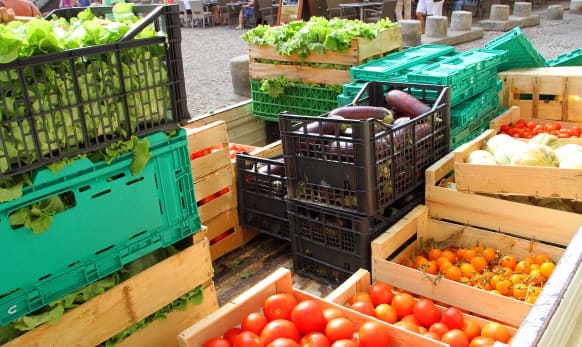Districts across the nation use Food Distribution Programs (FDPs) to boost their K‑12 school nutrition program. The most commonly known are USDA Foods in Schools and DoD Fresh Fruit and Vegetable Program. While those are the ones used by K‑12 nutrition programs, there are a couple others as well.
Bonus Resource: The Ultimate K‑12 Nutrition Management Cheat Sheet
The more you understand how these programs work, the more you’ll understand how to use them to maximize your Planned Assistance Level (PAL) and reduce your inventory risks. It’s never too early to start thinking about next year and learning more about the programs now will help you take the necessary steps to plan for the future. Of course, having the right K‑12 nutrition management tools helps, too.
The Primary Food Distribution Programs
There are four primary Food Distribution Programs. The two most commonly used by K‑12 nutrition programs are USDA Foods in Schools and DoD Fresh. At this level, participating schools are referred to as Recipient Agencies.
USDA Foods in Schools
USDA Foods in Schools is the overarching program that supports domestic child nutrition programs. These include the National School Lunch Program, the Child and Adult Care Food Program, and the Summer Food Service Program This support comes in the form of purchases of domestic agricultural products – fruits, vegetables, meat and dairy products – for use in schools and institutions. USDA Foods in schools supports school nutrition programs by offsetting the cost of food served on the lunch tray through Planned Assistance Level funding.
DoD Fresh Fruit and Vegetable Program (DoD Fresh)
The USDA Department of Defense Fresh Fruit and Vegetable Program – commonly known as DoD Fresh – allows schools to use USDA Foods entitlement dollars to buy fresh produce. The DoD Fresh program is a partnership between the USDA and the Department of Defense Logistics Agency (DLA). Essentially, K‑12 nutrition programs can allocate their Planned Assistance Level to the DoD Fresh program. They can use those funds to purchase fresh fruits and vegetables.
USDA Foods in Schools and DoD Fresh are the programs most commonly used at the K‑12 district level. The other two food distribution programs are the Commodity Supplemental Food Program and The Emergency Supplemental Food Program.
Commodity Supplemental Food Program (CSFP)
The Commodity Supplemental Food Program aims to improve the health of low-income people aged 60 years or older. The program offers nutritious USDA foods to supplement their diet. Although they must be certified, children are also eligible to participate in the program. CSFP operates through state agencies distributing the food to local agencies, such as departments of education or social services. Those local agencies, in turn, confirm the eligibility of program applicants, distribute the foods, and provide nutrition education.
The Emergency Food Assistance Program (TEFAP)
The Emergency Food Assistance Program (TEFAP) aims to supplement the diets of low-income individuals and families. This group includes senior citizens but, unlike the Commodity Supplemental Food Program, it is not exclusive to them. Through TEFAP, USDA purchases a variety of high-quality foods. They then make them available to distributing agencies, such as local food banks and community action agencies. In order to qualify for this program, families and individuals must meet certain eligibility criteria set by their state. Public and private non-profit organizations that offer nutrition assistance to low-income families must also meet criteria set by their state to participate in the program.
Get Support for Your K‑12 Nutrition Program
Taking advantage of these programs is simple but not always easy. These programs require participation to be successful and, for K‑12 nutrition programs, that means encouraging household applications. Districts need support in the form of easy-to-use technology and a knowledgeable team that can guide them.
Our team at LINQ is made up of many former school nutrition directors and state agency employees. We know what it takes for your school nutrition program to thrive. Connect with us today and let us walk you through how our cloud-based software can make your school nutrition program more successful than ever.
